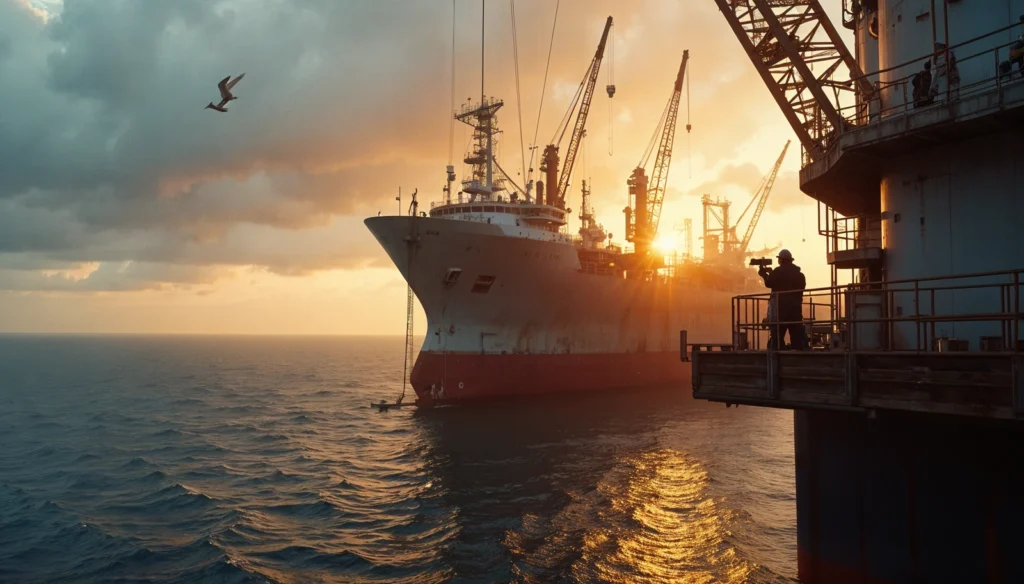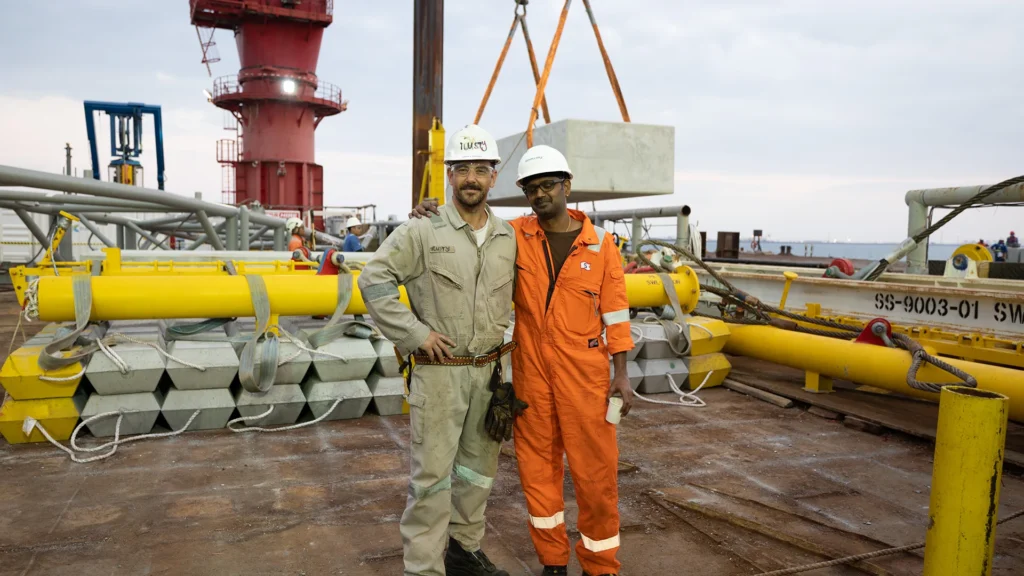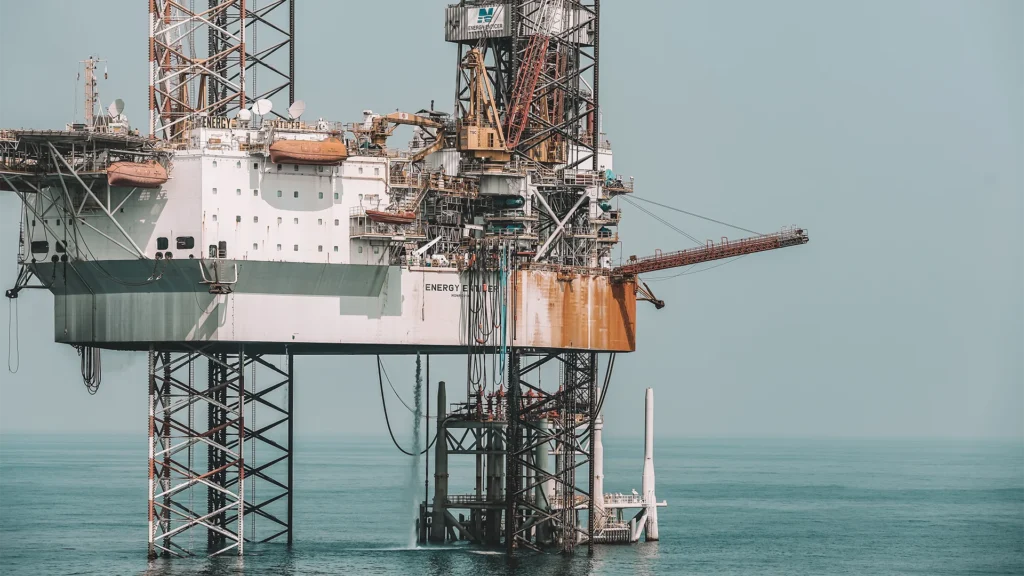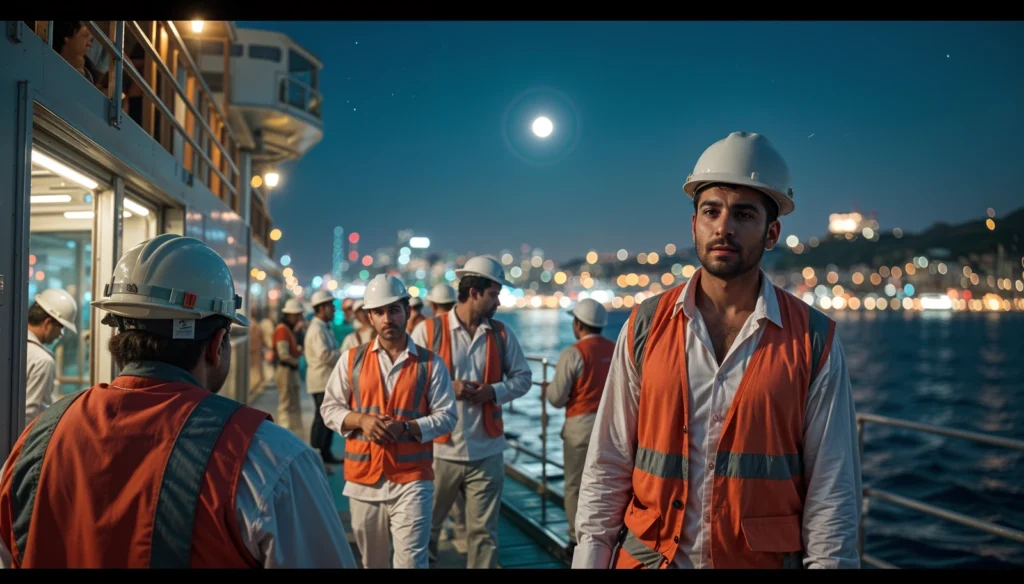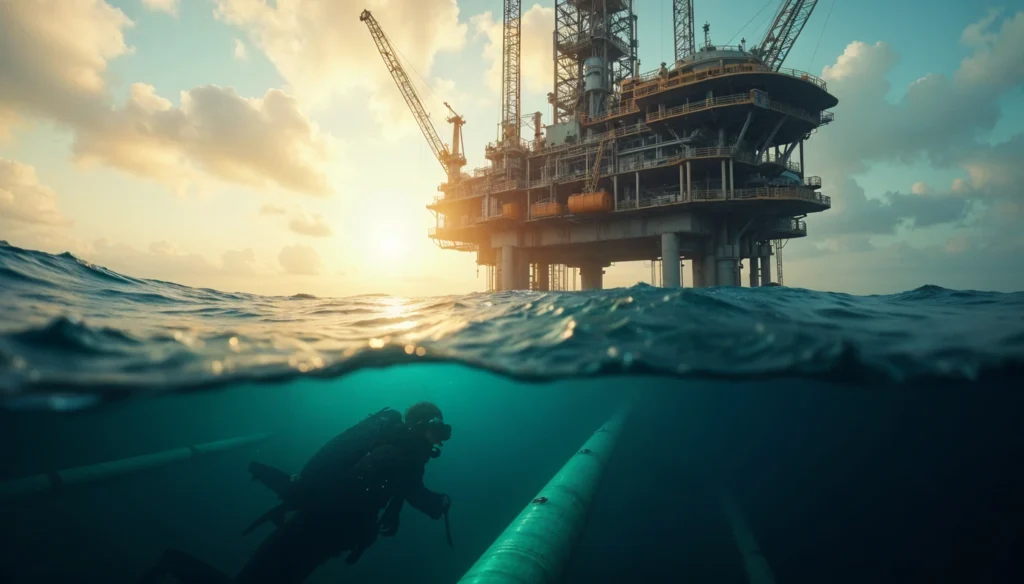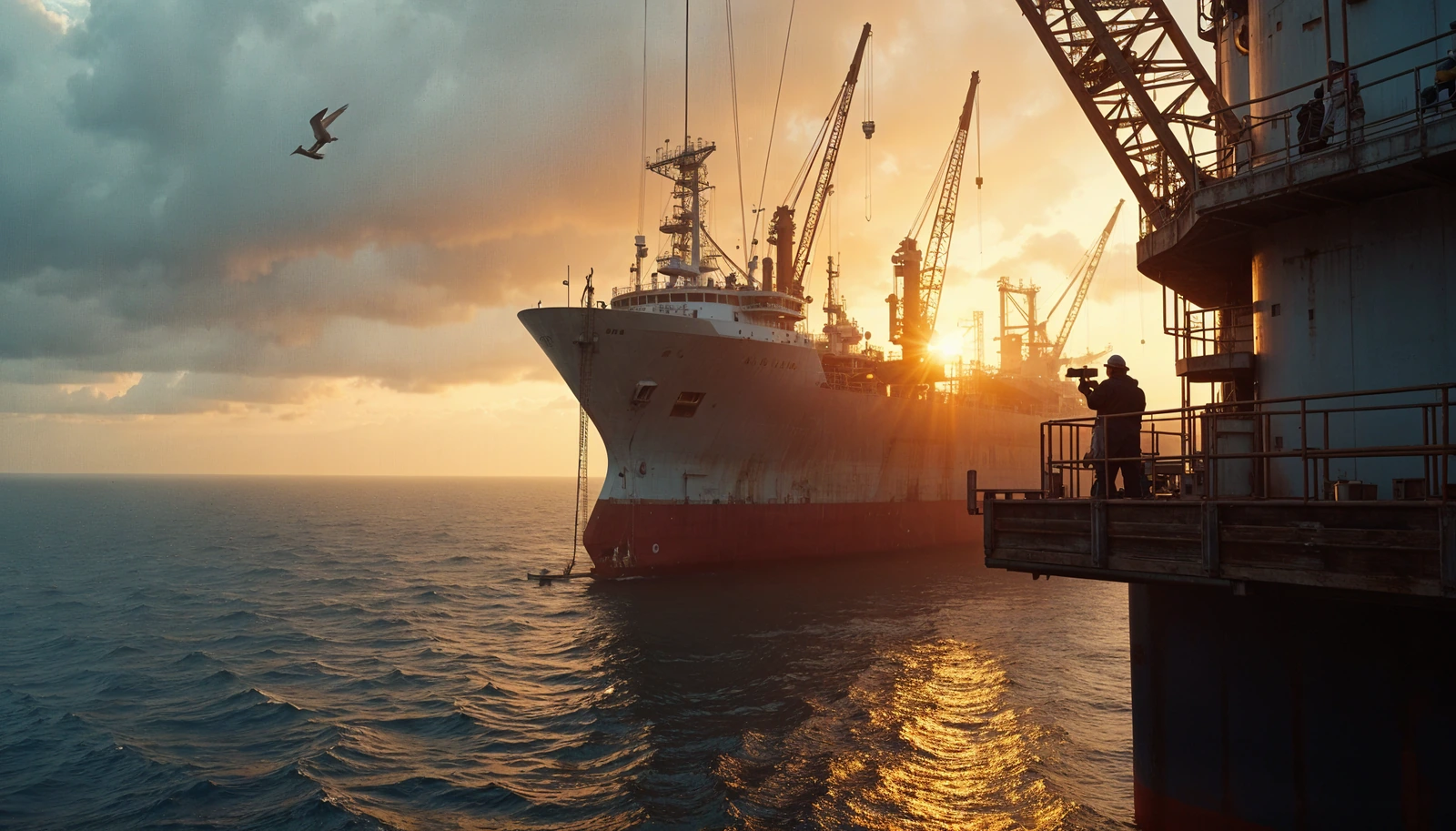Out at sea, far beyond the coastline and mobile reception, there are ships that never truly sleep. They drift, they build, and they breathe — like cities floating on steel. These are construction vessels: self-contained ecosystems where concrete meets current, where turbines rise from deck to horizon, and where crews from 20 countries share breakfast before assembling the next chapter of the energy grid.
At Aurora Media, we’ve spent months aboard these vessels — not just filming them, but living inside their rhythm. This article takes you behind the scenes of a world very few ever see.
Organized Chaos, 24/7
A construction vessel isn’t a cruise ship. It’s a machine. Every square meter has a purpose — pipe-handling decks, cable carousels, moonpools, cranes that swing 300 tons, and control rooms lit like NASA.
Operations don’t stop at sunset. They don’t stop for weekends. Some projects run 90-day rotations with round-the-clock shifts. At any hour, something is being lifted, calibrated, surveyed, or transported. You hear the hum of generators. The walkie-talkie clicks. The sound of hydraulic arms locking in.
The crew moves like clockwork — engineers, ROV pilots, deck officers, welders, riggers, cooks, medics, surveyors, and us — the media team.
We wake early. Check weather. Charge gear. Attend toolbox meetings. Then it’s on deck — helmets on, harnesses clipped — shooting among sparks, steel, and saltwater.
A Global Village on Water
On one project, we worked with a crew of over 120 people representing 22 nationalities. You hear Norwegian on the bridge, Tagalog in the galley, Polish in the control room, Hindi on the crane channel. And somehow, everyone understands the mission.
Shared meals play a huge role. The mess hall becomes a cultural crossroads. Indian curry next to Danish rye bread. Korean noodles beside Dutch pancakes. There’s always coffee — industrial strength. Always stories.
And over time, a community forms. You celebrate small wins together: a successful lift, a smooth ROV deployment, a shift without injury. You celebrate big ones too: the birth of someone’s child back home, a promotion after six years offshore, the final install of a months-long campaign.
That human side — the laughter, the routines, the solidarity — is what makes the footage breathe.
Living Inside a Machine
Cabins are compact. Days are long. Movement is constant. The vessel pitches and rolls, sometimes gently, sometimes violently. Sleep comes in short bursts. Isolation sets in.
And yet, there’s beauty.
Sunrise on an open sea, as turbine blades slice through orange sky. Fog banks rolling past a silent deck. The symmetrical ballet of anchor-handling vessels moving into position. These are moments we capture — not staged, not repeated, not forgotten.
We shoot from cranes. From helidecks. From ribs and tugboats. We film under floodlights, in rain, through salt-spattered lenses. And in between, we share jokes in the smoking shelter or huddle with engineers over mission plans.
Because once you’re onboard, you’re part of the city.
Storytelling at Sea
What we deliver to clients is more than documentation. It’s memory. A project may last 18 months, but our film can keep its pulse beating for decades — in boardrooms, investor decks, trade fairs, recruitment drives, and even classrooms.
We focus on more than the hardware. We show the heartbeat. The shared effort. The life onboard.
Because no matter how advanced the technology becomes, these floating cities are built — and held together — by people.


